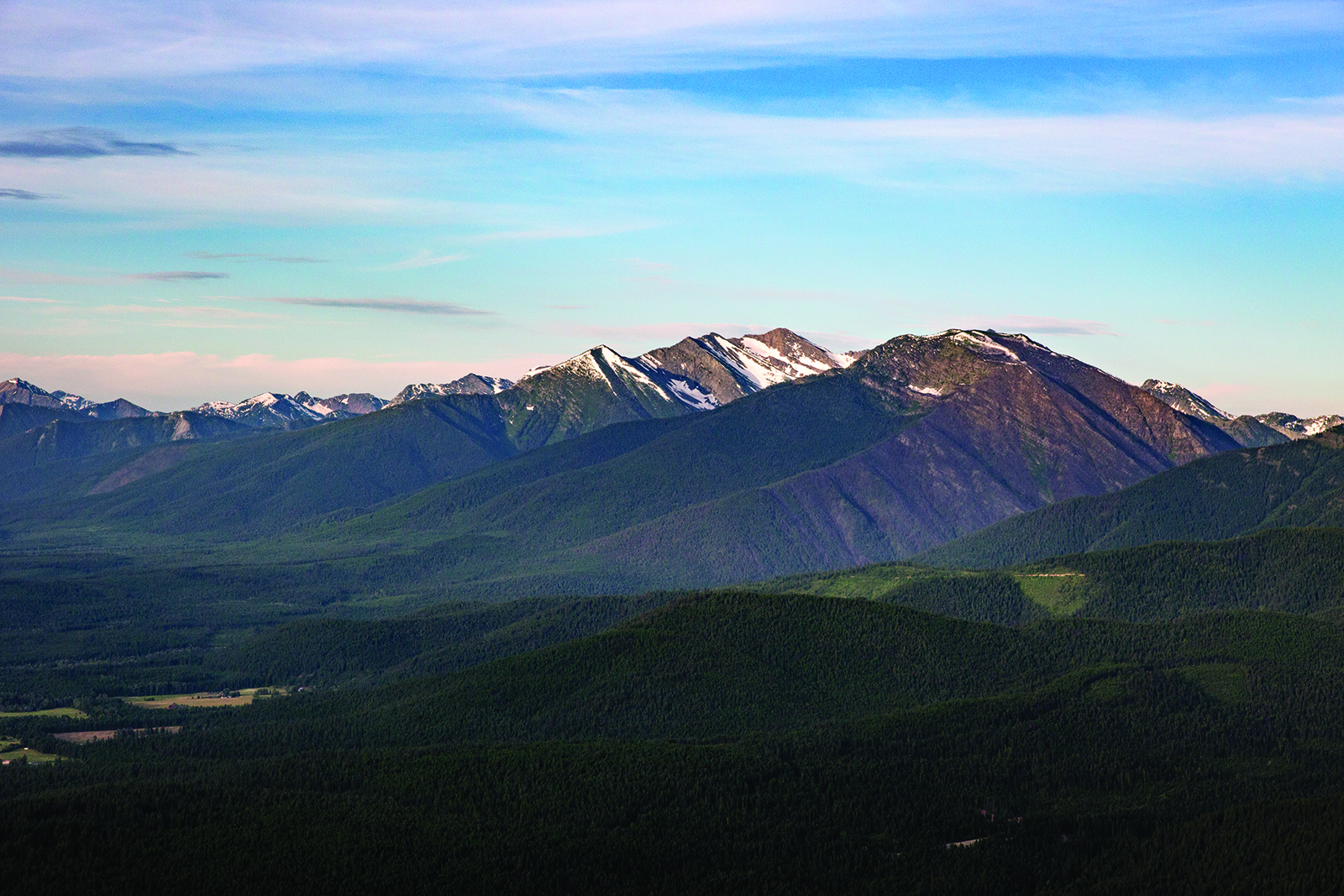Court Blocks Logging Project Proposed on Cabinet-Yaak Grizzly Habitat
Injunction on 56,000-acre Kootenai National Forest project area requires the Forest Service to assess how logging roads will impact isolated grizzly bear population
By Tristan Scott
A federal judge has ordered an injunction stalling the Knotty Pine timber project on 56,000 acres of Kootenai National Forest land until federal agencies address whether the construction of logging roads, as well as their illegal use, will harm isolated grizzly bear populations in the Cabinet-Yaak Ecosystem.
The April 24 order by U.S. District Judge Dana Christensen was issued in response to a lawsuit filed last year by conservation groups. The complaint accuses the U.S. Forest Service (USFS) and the U.S. Fish and Wildlife Service (FWS) of failing to analyze the damage that logging and road use would have on grizzly bears living in the Cabinet-Yaak Ecosystem Recovery Zone, a designation that is much smaller than the Northern Continental Divide or the Greater Yellowstone ecosystems.
In his order, Christensen said the agencies failed to adequately account for the harm to grizzly bears from illegal roads when they authorized the Knotty Pine Project. Critical grizzly bear habitat standards for motorized road density in core grizzly bear habitat, established by the Interagency Grizzly Bear Committee (IGBC), have also not been met, the order states.
“The Court does not intend to express any view on how the agencies should account for unauthorized motorized access going forward; the Court must defer to the agencies’ expertise on that point,” Christensen wrote. “However, the agencies must actually exercise that expertise for their decisions to stand. Claiming a total inability to ascertain, or even estimate, effects of unauthorized motorized use on [road density] — and, by extension, the effects on grizzly bears — despite the evidence in the record supplied by both USFS and third parties does not suffice.”
The lawsuit was filed May 17, 2022, by the Center for Biological Diversity, Alliance for the Wild Rockies, Yaak Valley Forest Council, Wildearth Guardians, and Native Ecosystems Council. The Kootenai Tribe of Idaho has also joined the complaint as intervenors. The lawsuit names as defendants Region 1 Forester Leanne Marten and Kootenai National Forest Supervisor Chad Benson, and alleges that defendants’ approval of the Knotty Pine timber sale violated the National Environmental Policy Act (NEPA), the National Forest Management Act (NFMA), the Administrative Procedure Act (APA), and the Endangered Species Act (ESA).
One of several large-scale logging projects under dispute in the Cabinet-Yaak Ecosystem, the Knotty Pine project is expected to unfold over the course of 10 years.
The project area consists of 56,009 acres located in Lincoln County in the Three Rivers Ranger District of the Kootenai National Forest. It involves commercial harvests on 2,593 acres, non-harvest fuel treatments on 4,757 acres and precommercial thinning on 2,099 acres. It authorizes a total of 7,465 acres of prescribed burning.
The project also includes adding 3.76 miles of an undetermined road to the road system, 1.2 miles of temporary road construction, 35 miles of road maintenance, and 4.04 miles of road storage.
The complaint raises numerous claims, but two were emphasized in the motion for a preliminary injunction that prompted Christensen’s order — that FWS failed to adequately analyze the effects that illegal roads have on grizzly bears in the project area, and that the project violates the Endangered Species Act by authorizing more than 1,300 acres of precommercial thinning in core habitat for grizzly bears “without disclosing how the units will be accessed and without discussing the effect on grizzly bears.”
The lawsuit states that roads located near choice grizzly bear habitats can drive females with cubs to less favorable habitat, resulting in lower cub survivorship. The judge’s order gives the federal land management agency credit for its efforts to monitor closed roads in the grizzly recovery zone, but said the problem nevertheless persists.
“To be sure, the Court credits Federal Defendants’ assertions that USFS monitors closures and fixes known problems promptly,” the judge’s order states. “USFS’s monitoring reports demonstrate considerable effort to monitor closure effectiveness well above its minimum commitments. The Court thus accepts on the current record that the use of any particular illegal road is, indeed, temporary. But the ongoing chronic problem of ineffective closures and unauthorized motorized access is permanent.”
According to the Forest Service, the aim of the project is to reduce the potential for high intensity wildfires while promoting desirable fire behavior characteristics and fuel conditions in the wildland urban interface; providing forest products that contribute to the sustainable supply of timber products from National Forest System lands; and enhancing big game winter conditions and improving wildlife forage habitat.

Although the parties dispute the estimated number of grizzly bears in the Cabinet-Yaak Ecosystem, the most recent population estimate detected a minimum of 50 grizzly bears alive at some point during 2019, five of which were known to be dead by the time the annual report was published. A biological opinion conducted by the FWS for the project acknowledges that “the CYE population has seen improvements over the past few decades but is still a small population in which the survival and reproduction of each individual female grizzly bear is very important.”
“This is excellent news for grizzly bears and everyone who loves the Kootenai National Forest,” Kristine Akland, Northern Rockies program director at the Center for Biological Diversity, stated in a press release. “This spectacular forest is home to female grizzly bears who should never be displaced by logging, but especially not in the spring when they’re coming out of hibernation. We’re optimistic that we can stop this destructive project for good.”